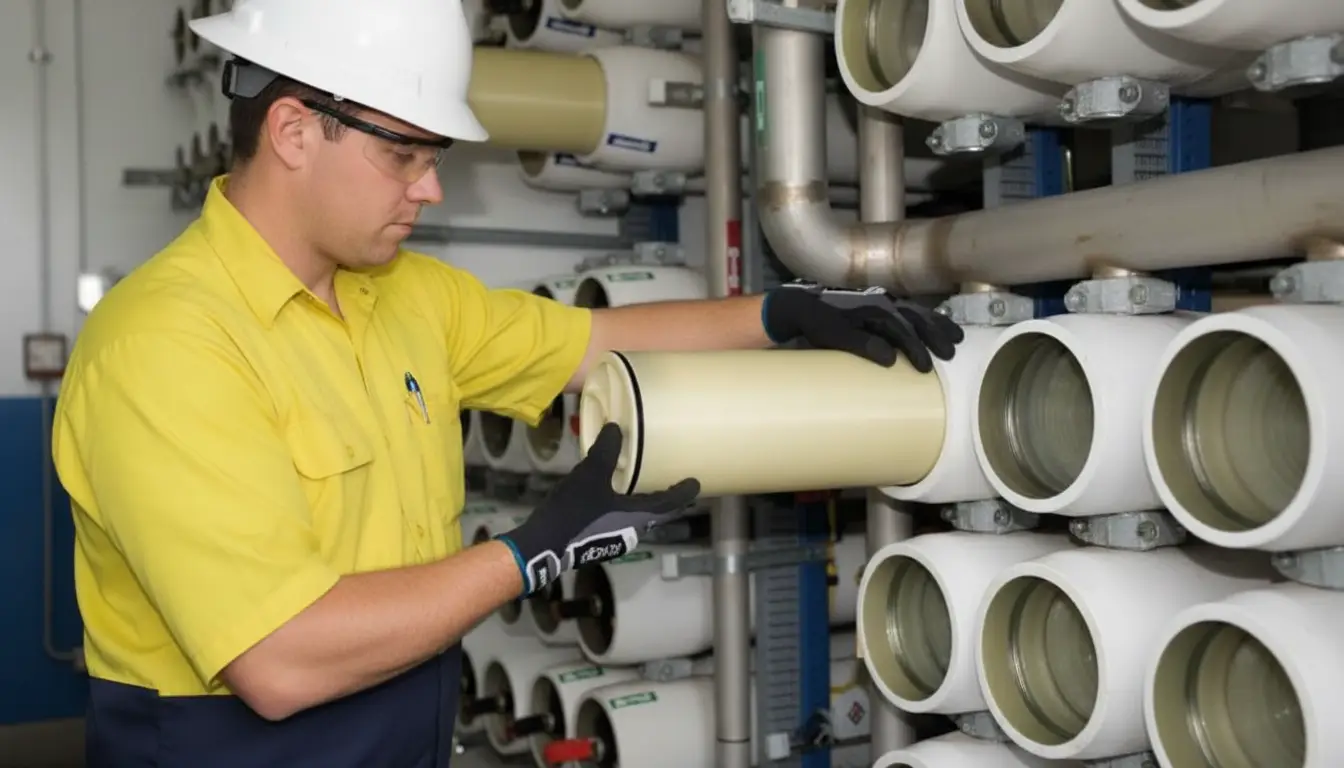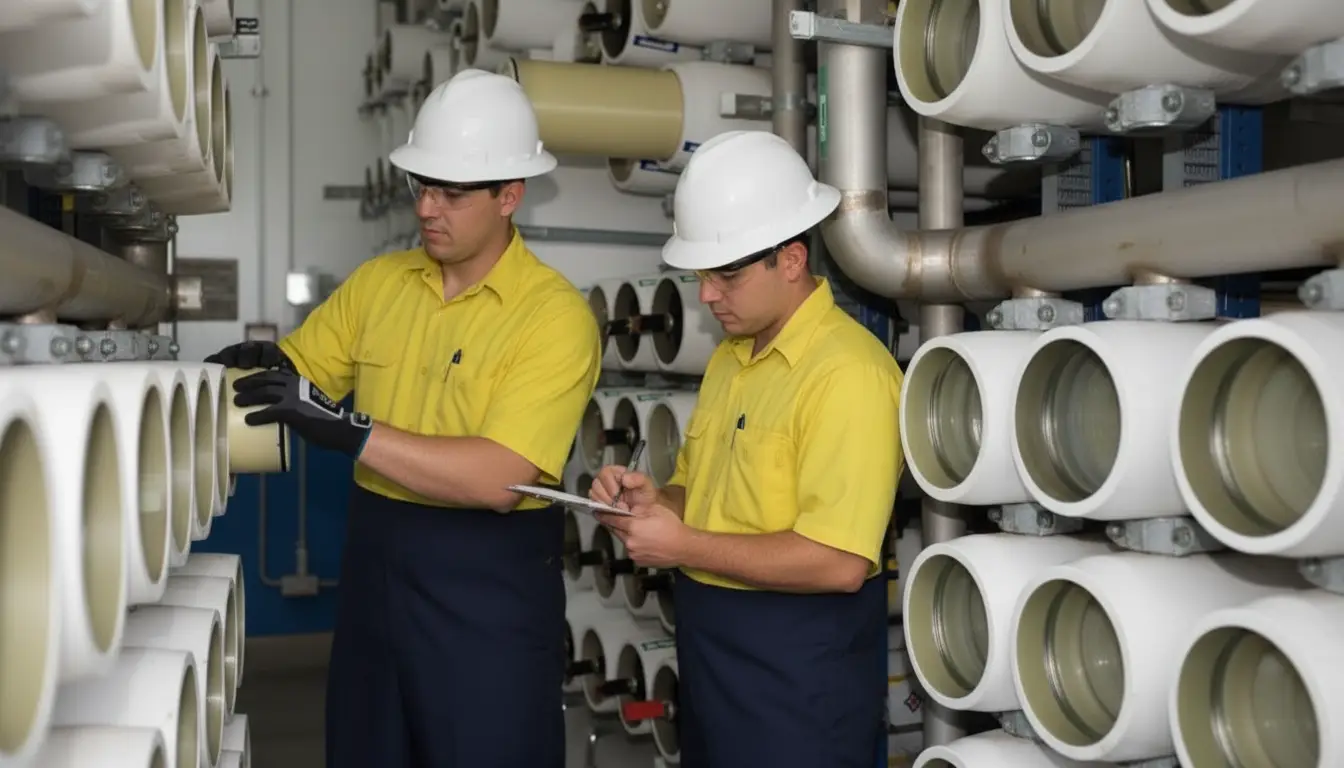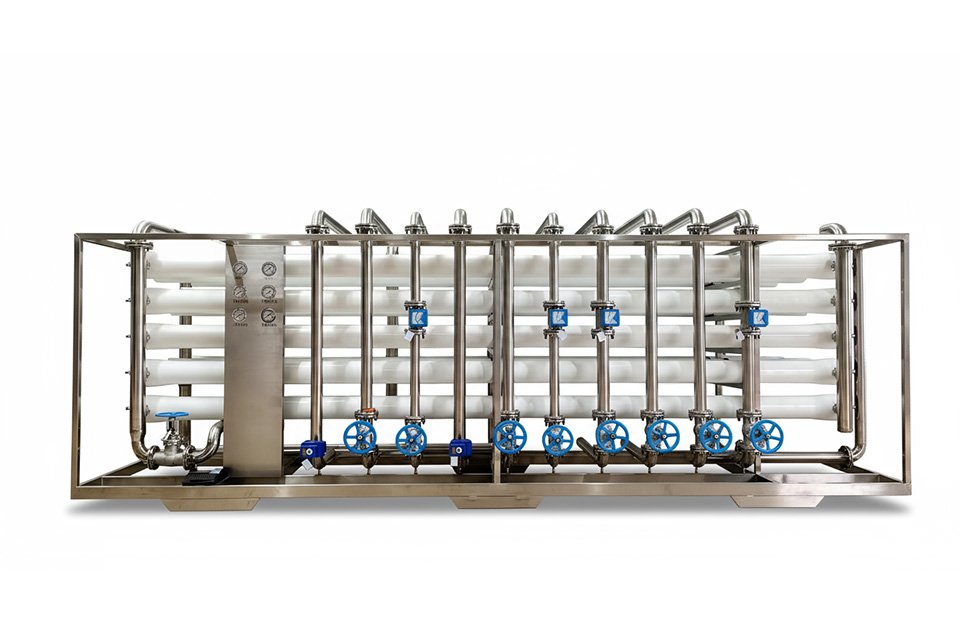How Often Should a RO Membrane Be Replaced for Optimal Performance?

Waiting too long to replace RO membranes costs money and ruins water quality. Your production depends on consistent performance. Smart replacement timing saves thousands in repairs.
Replace RO membranes every 2-3 years typically, but monitor performance indicators like pressure drop, flow decline, and salt passage increase. Replace when rejection drops below 95% or pressure increases 15%.

I learned this lesson during a critical production run. Our mold cooling water started showing inconsistent quality. Parts were coming out with surface defects. The RO membrane had been running for four years without replacement. After installing new membranes, reject rates dropped 90% overnight.
What Are the Key Signs That Your RO Membrane Needs Replacement?
Performance indicators tell you everything about membrane condition. Don't wait for complete failure. Early warning signs help you plan replacements during scheduled downtime instead of emergency shutdowns.
Monitor normalized permeate flow, salt passage rates, and differential pressure across membranes. Replace when flow drops 10-15%, salt passage increases above 5%, or pressure differential exceeds manufacturer specifications.
Understanding Performance Degradation Patterns
Membrane performance declines gradually then accelerates rapidly. The first year usually shows stable performance. Years two and three show slow degradation. After that, failure rates increase exponentially.
Flow decline happens first. Membrane pores get blocked by particles and scaling. You notice longer fill times for storage tanks. Pressure pumps work harder to maintain the same output.
Salt passage increases as membrane integrity fails. Small holes develop in the membrane surface. These holes let contaminants through. Water quality drops even though flow rates seem normal.
Pressure differential shows membrane fouling severity. Clean membranes have low pressure drop across elements. Fouled membranes create resistance. The pump works harder but produces less water.
I track these numbers weekly on all our systems. Early detection prevents emergency replacements. Planning replacements during maintenance windows saves 50% on labor costs. Emergency replacements during production runs cost thousands in downtime.
Temperature affects degradation rates significantly. High temperature systems need more frequent replacement. Every 10°F increase doubles chemical reaction rates. Hot water accelerates membrane aging.
How Do Operating Conditions Affect Replacement Frequency?
Your water quality and system operation determine membrane lifespan. Clean water systems run longer between replacements. Harsh conditions require more frequent changes. Understanding your conditions helps predict replacement needs.
High TDS water, extreme pH levels, chlorine exposure, and temperature fluctuations reduce membrane life. Poor pretreatment and inadequate cleaning also accelerate degradation requiring more frequent replacement cycles.
Water Quality Impact on Membrane Life
Feed water quality makes the biggest difference in membrane lifespan. Clean municipal water can run 4-5 years. Well water with high minerals needs replacement every 2-3 years. Industrial water may require annual replacement.
TDS levels above 1000 ppm stress membranes constantly. High salt concentrations increase osmotic pressure. Membranes work harder to push water through. This constant stress reduces lifespan by 30-50%.
pH extremes damage membrane materials. TFC membranes work best between pH 6-8. Operation outside this range causes hydrolysis. The polymer chains break down. Rejection rates drop quickly.
Chlorine destroys TFC membranes instantly. Even trace amounts cause permanent damage. Free chlorine reacts with polyamide. The membrane develops holes within hours. Always remove chlorine completely before RO treatment.
Iron and manganese cause severe fouling. These metals precipitate on membrane surfaces. The deposits trap other contaminants. Cleaning becomes difficult. Membrane life drops to 12-18 months with high iron levels.
I installed a system at a client's facility with 15 ppm iron. We tried various pretreatment methods. Nothing worked long-term. We ended up replacing membranes every 18 months. The lesson: fix water quality problems before the RO system.
What Are the Different Replacement Strategies?
You can replace all membranes at once or stage replacements over time. Each approach has advantages depending on your situation. The right strategy balances cost, performance, and operational needs.
Complete replacement ensures uniform performance but requires higher upfront costs. Staged replacement spreads costs over time but may create performance variations across membrane elements in the same system.
Complete vs Staged Replacement Approaches
Complete replacement gives best performance consistency. All membranes start with the same capacity. Water quality stays uniform across the system. This approach works best for critical applications.
The downside is cost and downtime. Replacing all membranes at once is expensive. You also need longer maintenance windows. Some facilities cannot afford extended shutdowns.
Staged replacement spreads costs over 6-12 months. Replace the first stage membranes first. These membranes work hardest and fail fastest. Replace subsequent stages as performance declines.
This approach maintains system operation during replacements. You only shut down one section at a time. Cash flow stays manageable. But performance varies across different sections.
I prefer staged replacement for most applications. Start with the first stage membranes after 18 months. Replace second stage at 24 months. Third stage goes to 30 months. This schedule maintains good overall performance while managing costs.
Emergency replacement creates the worst situation. Performance has already failed. Production stops. Rush orders cost 2-3 times normal prices. Overnight shipping adds hundreds to costs.
How Do You Extend RO Membrane Life?
Proper maintenance doubles membrane lifespan. Simple steps prevent premature failure. The key is consistent care and monitoring. Small investments in maintenance save thousands in replacements.
Maintain proper pretreatment, perform regular cleaning cycles, monitor operating parameters, and avoid operational upsets. Also ensure proper system shutdown procedures and storage for extended downtime periods.
Essential Maintenance Practices
Pretreatment protects membranes from damage. Sediment filters remove particles. Carbon filters eliminate chlorine. Water softeners prevent scaling. Proper pretreatment can double membrane life.
Regular cleaning removes accumulated fouling. Use manufacturer-approved chemicals. Acidic cleaners remove mineral scale. Alkaline cleaners remove organic matter. Clean before performance drops significantly.
Monitor key parameters daily. Track flow rates, pressure, and conductivity. Plot trends to identify problems early. Sudden changes indicate system issues. Quick response prevents permanent damage.
Avoid operational upsets that stress membranes. Maintain stable pressure and flow rates. Don't exceed design limits. Rapid changes cause membrane damage. Consistency extends membrane life.
Proper shutdown procedures prevent damage during downtime. Flush with biocide solution for extended storage. Drain completely or maintain circulation. Stagnant water grows bacteria that damages membranes.
I developed a maintenance checklist after losing several membrane sets to poor care. Daily monitoring takes 10 minutes. Monthly cleaning takes 2 hours. This small time investment doubled our membrane life from 2 to 4 years.
What Factors Should Guide Your Replacement Decision?
Multiple factors influence replacement timing beyond simple age. Water quality requirements, system criticality, and cost considerations all matter. The decision requires balancing performance needs with economic reality.
Consider water quality requirements, system redundancy, replacement costs, and downtime impact. Also factor in seasonal demand variations and planned maintenance schedules for optimal replacement timing.

Balancing Performance and Economics
Water quality requirements set minimum performance standards. Critical applications need 99%+ rejection rates[^1]. Less critical uses can accept 95% rejection. Know your minimum acceptable performance level.
System redundancy affects replacement urgency. Backup systems allow planned replacement. Single systems require emergency replacement when they fail. Redundancy gives flexibility in timing decisions.
Replacement costs vary significantly by timing. Planned replacements cost 40-60% less than emergency replacement. Bulk purchases reduce unit costs. Off-season replacement avoids peak demand pricing.
Downtime impact varies by production schedule. Replace during planned shutdowns when possible. Avoid replacement during peak production periods. Schedule around critical deadlines and maintenance windows.
Seasonal demand affects replacement timing. Replace before high-demand seasons. Spring replacement prepares for summer cooling loads. Fall replacement prepares for winter heating needs.
I always plan replacements 6 months ahead. This gives time to source materials and schedule labor. Emergency replacements cost 3 times more and create production disruptions. Planning prevents both problems.
Replace RO membranes based on performance monitoring rather than fixed schedules. Proper maintenance extends life while performance tracking optimizes replacement timing.
[^1]: Understanding the importance of high rejection rates can enhance your water quality management strategies.

